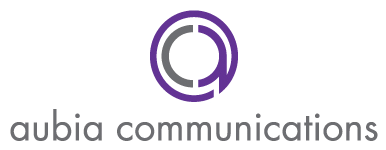 In 1492 when Christopher Columbus sailed the ocean blue, the Internet wasn’t even a word, but solopreneurs and small business owners can feel like they are on a journey discovering the New World when it comes to the vast realm of social media today. Like the many islands Columbus first landed on, there are various social media platforms out there, each with their own strengths and weaknesses. It can be an overwhelming experience acquainting yourself with the culture of each, as Columbus discovered with the island natives, knowing what is and isn’t appropriate actions. Forging successful relationships online, though, requires an understanding of how these cultures work.
In 1492 when Christopher Columbus sailed the ocean blue, the Internet wasn’t even a word, but solopreneurs and small business owners can feel like they are on a journey discovering the New World when it comes to the vast realm of social media today. Like the many islands Columbus first landed on, there are various social media platforms out there, each with their own strengths and weaknesses. It can be an overwhelming experience acquainting yourself with the culture of each, as Columbus discovered with the island natives, knowing what is and isn’t appropriate actions. Forging successful relationships online, though, requires an understanding of how these cultures work.
Exploring the social media platforms that best fit your objectives
On his way to find the best route for the spice trade, Columbus discovered many other locations with valuable resources. As a solopreneur setting out in social media, the best platforms to be on are the ones where your public/audience is, but you, too, can also discover platforms rich with opportunity.
As Columbus didn’t explore each new land on his route, by no means is the list below comprehensive of all social media platforms. This is a starting point of some of the more popular platforms. Do some research in your own niche, find out where your audience/public is, and start your journey into this New World.
The king of the social media world with more than 1 billion users now, Facebook is the place to start. With the majority of users being females and over the age of 35, there is so much targeted marketing a solopreneur can do with this platform. First, start with building a business page where your audience/public can connect with you. Add photo albums or videos displaying your products. Update your customers on new deals and projects. Share information that would be useful for them. For example, if you own a bakery, post recipes for the best chocolate chip cookies. And, if you’re really into tech, the platform even allows you to customize apps.
Google+
This platform is Google’s answer to Facebook, and with 400 million users, it’s growing. It offers some unique features, like the ability to host Google+ Hangouts, and now Google Communities. With these features and Facebook’s current controversy over its algorithm, Google+ is beginning to show some real competition for the king.
With 500 million users and an average user age of 37.3 years old, Twitter has been gaining popularity over the past few years. In my opinion, Twitter users are, on average, more tech savvy than Facebook users. I recommend using Twitter when your public/audience is on the Internet for more than just personal reasons and wants information on the go. Getting to the point is essential on this platform that only allows updates in 140 characters or less. You can still connect with your customers by replying directly to them using @UserName and #hashtags to join the conversation. For example, if your business is website development, share a news story about the latest virus protection, using the hashtag #virus to see what others are asking about it.
Everyone, in my opinion, should have a LinkedIn profile to connect on a professional level with colleagues. Professional LinkedIn Groups, though, are another thing. With an average user age of 44 and 175 million users, you need to be sure your business would fit with the professional status of this platform. If you run a business that connects other professionals, like insurance sales persons, than hosting a group to discuss the newest trends in the industry would be worthwhile. If on the other hand, though, your business concentrates on arts, a LinkedIn Group isn’t going to meet your objectives.
This platform is exploding with 25 million users, and, from personal experience I can tell you it’s quite addictive. If you are visually-based business, such as arts-and-crafts, this is a great platform to display your work and link back to your website. Dominated by women at an average of 40 years old, Pinterest is a place to share ideas and products. Create boards that your public/audience will want to learn about using your products. For example, if you sell a line of beauty products, create a board about the perfect girls’ day. Pin your products with tips on how to create a spa-inspired party.
YouTube
At 4 billion views per day, YouTube has redefined how we watch video content. With most consumers preferring video over text, video provides a great mix to your content marketing plan. You don’t have to have the million-dollar equipment to make great video content, either. Many of the videos that go viral are made on small budgets using basic equipment. In business, make instructional videos about your product. If you own a bait and tackle shop, make a video about how to best cast a line using one of the rods you sale.
Vimeo
A competitor to YouTube with 12.6 million users, Vimeo is also a popular video sharing site, especially for organizations where YouTube may be blocked by IT.
With 100 million users and growing every day, Instagram has become an Internet sensation where you can share photos and add special effects to them. This is a great platform for sharing mobile photos taken on the fly. Like live Tweeting an event, you can capitalize on the visual and instantly share photos from your organization’s special event.
Flickr
Another photo sharing site, Flickr and its 75 million users set up photo streams to display their camera work. When I worked for a military base, we set up our Flickr account to show events from each event we covered for the post newspaper.
foursquare
In the past year or so, mobile technology has become the next big thing. If your website or social media platform hasn’t gone mobile, it will soon be irrelevant to today’s users. Growing at 25 million users and already 1 million businesses using it, foursquare is a mobile social media platform that allows users to “check in” at certain locations, and they can then be rewarded by participating businesses. Users can also post reviews and photos of your location on the platform. At my favorite shoe store, I can earn a 10 percent discount for every fourth check in I make.
Groupon
With 36.9 million users, this platform offering coupons is bringing new customers to businesses every day. I found a great carpet cleaning service in Hampton, Va., when we were moving using a Groupon deal, and due to the great service, we now us the company for our rental home.

Etsy
A platform for local artisans to set up studios virtually, Etsy allows its 20 million users to sell their crafts to online buyers. This is a wonderful space if you have an unique art product. My friend creates a product called scrapboards, a 3D art form using bright colors and memorabilia, and sells through her virtual store on Etsy. I bought a Hawaiian-themed one two years ago for a Christmas present.
Review Sites
Review sites like Yelp, Urbanspoon and Angie’s List can make or break a business. Just a handful of not-so-wonderful reviews can have potential customers running for the hills. Look for your status on general review sites and sites more specific to your industry. For example, if you run a hostel, HostelBookers is a popular reservation site for travelers. Be sure to monitor these sites regularly and respond to any negative comments.
Site Aggregators
There are many social media platforms that can help you promote your website content to a wider public/audience. The most popular are Reddit, Stumbleupon and Storify. You can add your content to each of these sites in an unique way and other users can help you share them. For example, say the Red Cross hosted a campaign to raise blood donations. The organization posted a video on YouTube about how a pint of blood collected in one city saved the life of a critically-injured car wreck victim in another city; Tweeted facts about how much blood is needed in the U.S. for surgeries; featured a survivor’s story on Facebook; and shared photos from a blood drive on Instagram. The Red Cross could then make a Storify article out of that content, share that article on Reddit so other users could vote it to the front page, and post it to Stumbleupon for others to find.
Blogs
Blogs are unique in the social media world as they help to establish your expertise in your niche. Some popular platforms for blogs are Tumblr with 150 million users and WordPress with 74 million blogs, including this one. I recommend every business host a blog on incorporated in its website to answer customer questions about products and discuss news that affects its industry. Replying to comments left on blog posts and featuring your readers is a great way to connect and interact with your audience/public.
How do I manage all these?
Columbus had many routes he could have explored, but he chose the one he thought would best take him to the East Indies. I know the list of choices of social media platforms can seem overwhelming. With all the work you are already doing, it may seem you don’t have the time to manage another communication method. Social media is a wonderful way to connect and interact, and you don’t have to be everywhere at all times. Pick a few platforms to explore and add new ones as you become more comfortable with the concept. I concentrate on my blog, Facebook, Twitter, LinkedIn and Pinterest accounts. I’m on many others platforms, but as my public/audience isn’t there that much, I update those much less. Find your schedule and do what best benefits you and your public/audience.
Is your business on social media platforms? How are you exploring in the social media world? Share the links to your social media platforms in the comments.
Thanks to Expanded Ramblings and Royal Pingdom with the help on statistics for this post.
photo credit: hunter.gatherer via photopin cc



